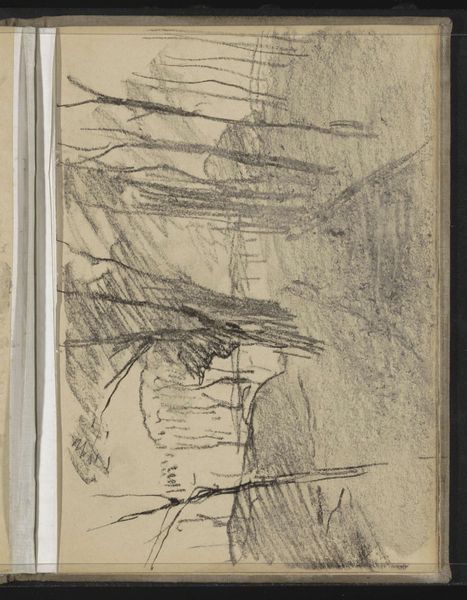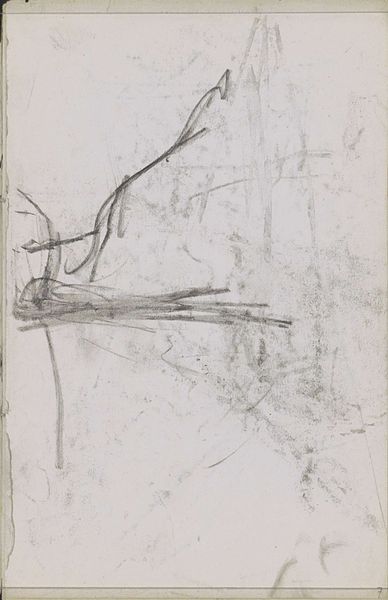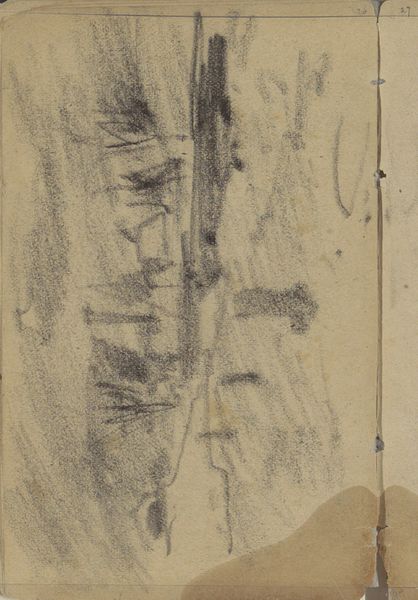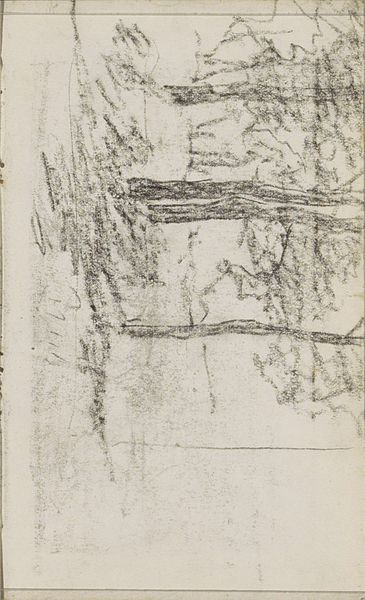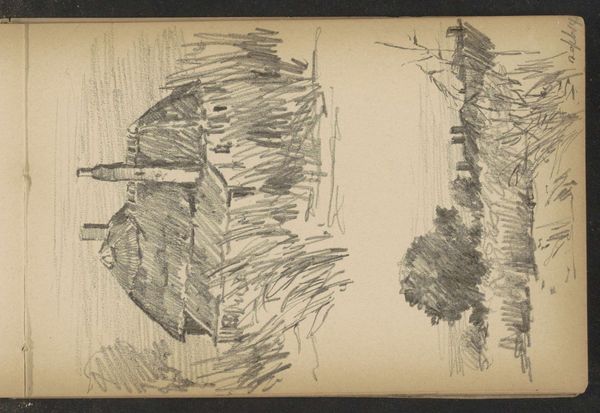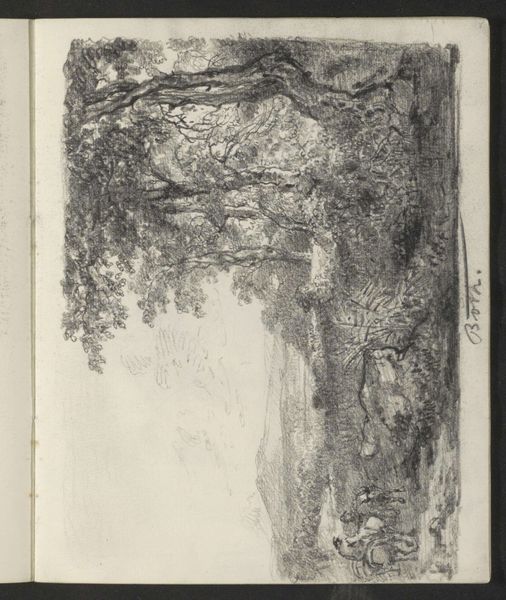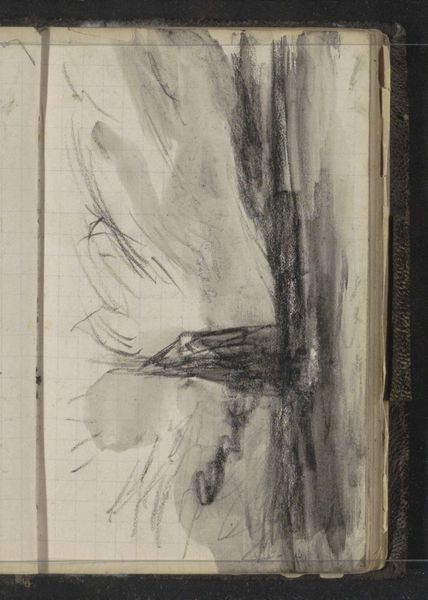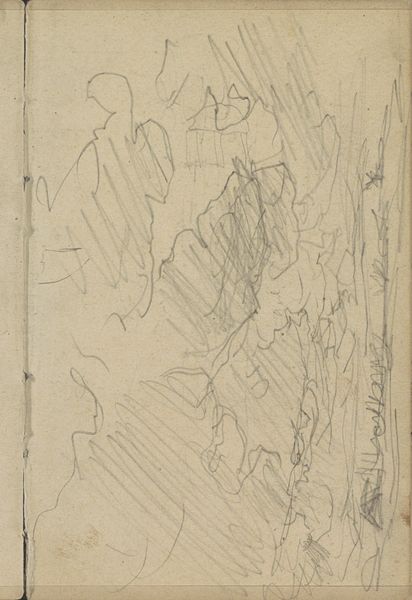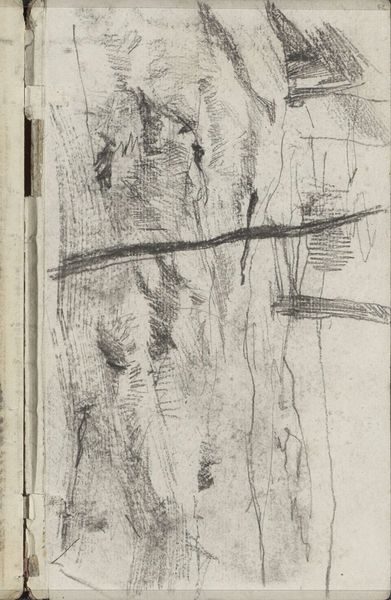
Copyright: Rijks Museum: Open Domain
Curator: Welcome. Here in the Rijksmuseum, we have "Bos bij Ede," or "Wood near Ede," a drawing rendered between 1893 and 1897 by Willem Witsen. It’s primarily pencil and ink on paper. Editor: The initial impact is one of sparseness. Bare branches against a pale sky—it evokes late autumn, a feeling of melancholy and exposure. The strong horizontal of the fallen log arrests the eye, providing an anchor within an otherwise ethereal landscape. Curator: It's interesting you picked up on the melancholy. Witsen belonged to a group called the Amsterdam Impressionists, who sought to capture fleeting moments and moods in their art. Trees themselves carry significant symbolic weight, don't they? Here they almost serve as silent witnesses, guardians of time and memory, to the change of seasons. Editor: Yes, I can see how the symbolism lends itself to cultural interpretations, however, from a purely compositional view, notice the balance. The skeletal forms of the trees are rendered with a clear understanding of depth through varied linework, creating depth in the picture plane. It emphasizes formal structure more than raw emotion. The negative space also guides your gaze. Curator: I find that idea fascinating. Witsen does provide subtle yet persistent linear indicators of movement to guide one into that dark shaded zone, leading the eye across the surface towards… what, a shadowed part of our minds, maybe? Editor: Perhaps. To me, though, this is just a study in textures—smooth sky juxtaposed against the rough bark, light and shadow creating visual interest more than profound meaning. Look how Witsen suggests light reflecting on the surface of the stream or pool through those very specific applications of ink or shadow. Curator: Do you think this emphasis on capturing these naturalistic elements strips some of the spiritual significance of these landscape motifs? Editor: Not necessarily, seeing something realistically does not need to be stripped from it's symbolic or deeper context. Curator: It is interesting to consider how a focus on formal qualities does not negate the emotional depth or contextual resonance of artwork like Witsen’s sketch. I hadn't considered that so deeply. Editor: Indeed, analyzing art means understanding that each interpretation is unique. We each find what we seek in its construction, mood and technique.
Comments
No comments
Be the first to comment and join the conversation on the ultimate creative platform.
